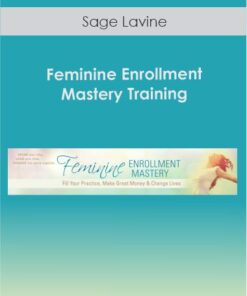3-Day: Comprehensive Training in Women’s Health: Today’s Best Practices for Improving Recovery and Outcomes – Debora Chasse
Question and Answer
What is 18 Hours 58 Minutes Women’s bodies?
18 Hours 58 Minutes Women’s bodies is go through a lot in a lifetime..
How does 18 Hours 58 Minutes Women’s bodies go through a lot?
18 Hours 58 Minutes Women’s bodies go through a lot in a lifetime.
What is the stresses and strains of pregnancy,?
the stresses and strains of pregnancy, is Add childbirth, surgery, and trauma can lead to many problems, from pelvic floor disorders and lymphedema to back pain and bone loss..
How does the stresses and strains of pregnancy, Add?
Add the stresses and strains of pregnancy, childbirth, surgery, and trauma can lead to many problems, from pelvic floor disorders and lymphedema to back pain and bone loss.
What is Purchase 3-Day:?
Purchase 3-Day: is Comprehensive Training in Women's Health: Today's Best Practices for Improving Recovery and Outcomes - Debora Chasse courses at here with PRICE $599.99 $244 Women’s bodies go through a lot in a lifetime..
How does Purchase 3-Day: go through a lot?
Purchase 3-Day: Comprehensive Training in Women's Health: Today's Best Practices for Improving Recovery and Outcomes - Debora Chasse courses at here with PRICE $599.99 $244 Women’s bodies go through a lot in a lifetime.
What is the stresses and strains of pregnancy,?
the stresses and strains of pregnancy, is Add childbirth, surgery, and trauma can lead to many problems, from pelvic floor disorders and lymphedema to back pain and bone loss..
How does the stresses and strains of pregnancy, Add?
Add the stresses and strains of pregnancy, childbirth, surgery, and trauma can lead to many problems, from pelvic floor disorders and lymphedema to back pain and bone loss.
What is the unique needs of women,?
the unique needs of women, is Without specialized training in you could be leaving your patients misunderstood, misdiagnosed, undertreated and underserved – failing to end their pain, missing an opportunity to restore wellness to their lives, and leaving them to face the risk, discomfort and cost of unnecessary surgeries..
How does the unique needs of women, specialized training?
Without specialized training in the unique needs of women, you could be leaving your patients misunderstood, misdiagnosed, undertreated and underserved – failing to end their pain, missing an opportunity to restore wellness to their lives, and leaving them to face the risk, discomfort and cost of unnecessary surgeries.
What is This intensive training course recording?
This intensive training course recording is This intensive training course recording will provide you with today’s most innovative treatments to help women reclaim active, satisfying, pain-free lives..
How does This intensive training course recording will provide?
This intensive training course recording will provide you with today’s most innovative treatments to help women reclaim active, satisfying, pain-free lives.
What is Watch?
Watch is and bring valuable additions to your clinical toolbox that will allow you to implement advanced treatment plans for the most common issues women face, including pregnancy/postpartum complications, pelvic floor dysfunction, breast cancer, lymphedema, fibromyalgia and osteoporosis..
How does Watch bring?
Watch and bring valuable additions to your clinical toolbox that will allow you to implement advanced treatment plans for the most common issues women face, including pregnancy/postpartum complications, pelvic floor dysfunction, breast cancer, lymphedema, fibromyalgia and osteoporosis.
What is you’ll?
you’ll is What’s more, leave this training better able to expand your practice, serving as a go-to clinician on issues related to women’s health in rehabilitation..
How does you’ll leave?
What’s more, you’ll leave this training better able to expand your practice, serving as a go-to clinician on issues related to women’s health in rehabilitation.
What is you?
you is Leave feeling confident and fulfilled, knowing that can change the lives of women!.
How does you Leave feeling?
Leave feeling confident and fulfilled, knowing that you can change the lives of women!
What is strategies?
strategies is Develop for creating safe environments and discussing sensitive medical concerns..
How does strategies Develop?
Develop strategies for creating safe environments and discussing sensitive medical concerns.
What is strategies?
strategies is Outline for providing culturally competent care and supporting trauma survivors..
How does strategies Outline?
Outline strategies for providing culturally competent care and supporting trauma survivors.
What is evaluation methods?
evaluation methods is Demonstrate for pregnancy/postpartum complications, pelvic floor dysfunction, lymphedema, fibromyalgia, osteoporosis, and impairments related to breast cancer treatment..
How does evaluation methods Demonstrate?
Demonstrate evaluation methods for pregnancy/postpartum complications, pelvic floor dysfunction, lymphedema, fibromyalgia, osteoporosis, and impairments related to breast cancer treatment.
What is interventions?
interventions is Demonstrate for reducing pelvic pain and managing pelvic floor dysfunction..
How does interventions Demonstrate?
Demonstrate interventions for reducing pelvic pain and managing pelvic floor dysfunction.
What is interventions?
interventions is Demonstrate for resolving bladder hyperactivity and incontinence..
How does interventions Demonstrate?
Demonstrate interventions for resolving bladder hyperactivity and incontinence.
What is interventions?
interventions is Demonstrate for reducing low back pain related to pelvic floor dysfunction..
How does interventions Demonstrate?
Demonstrate interventions for reducing low back pain related to pelvic floor dysfunction.
What is interventions?
interventions is Demonstrate for rebuilding core muscles and stability after childbirth..
How does interventions Demonstrate?
Demonstrate interventions for rebuilding core muscles and stability after childbirth.
What is interventions?
interventions is Demonstrate for pain, swelling, ROM, fatigue, and functional impairments in patients undergoing treatment for breast cancer..
How does interventions Demonstrate?
Demonstrate interventions for pain, swelling, ROM, fatigue, and functional impairments in patients undergoing treatment for breast cancer.
What is interventions?
interventions is Demonstrate or reducing pain and improving strength, flexibility, and stamina in patients with fibromyalgia..
How does interventions Demonstrate?
Demonstrate interventions or reducing pain and improving strength, flexibility, and stamina in patients with fibromyalgia.
What is interventions?
interventions is Demonstrate for controlling swelling, decreasing fluid buildup, and preventing infections in patients with lymphedema..
How does interventions Demonstrate?
Demonstrate interventions for controlling swelling, decreasing fluid buildup, and preventing infections in patients with lymphedema.
What is interventions?
interventions is Demonstrate for decreasing bone loss, protecting the spine, reducing fall risk, and increasing mobility in patients with osteoporosis..
How does interventions Demonstrate?
Demonstrate interventions for decreasing bone loss, protecting the spine, reducing fall risk, and increasing mobility in patients with osteoporosis.
What is dynamic neurocognitive imagery techniques?
dynamic neurocognitive imagery techniques is Demonstrate for helping patients identify and recruit the correct muscles during exercises..
How does dynamic neurocognitive imagery techniques Demonstrate?
Demonstrate dynamic neurocognitive imagery techniques for helping patients identify and recruit the correct muscles during exercises.
What is strategies?
strategies is Discuss for more effectively combining multiple modalities during treatment, therapeutic exercise, soft tissue mobilization, lymphatic drainage, trigger point release, mindfulness, and dynamic cognitive imagery (Franklin Method)..
How does strategies Discuss?
Discuss strategies for more effectively combining multiple modalities during treatment, therapeutic exercise, soft tissue mobilization, lymphatic drainage, trigger point release, mindfulness, and dynamic cognitive imagery (Franklin Method).
What is comprehensive treatment strategies?
comprehensive treatment strategies is Develop for specific impairments..
How does comprehensive treatment strategies Develop?
Develop comprehensive treatment strategies for specific impairments.
What is evaluation and treatment techniques?
evaluation and treatment techniques is Apply demonstrated throughout the course to case scenarios..
How does evaluation and treatment techniques Apply?
Apply evaluation and treatment techniques demonstrated throughout the course to case scenarios.
What is the latest advances?
the latest advances is Discuss in women’s health and their implications for treatment..
How does the latest advances Discuss?
Discuss the latest advances in women’s health and their implications for treatment.
What is documentation?
documentation is Review coding, billing, and for women’s health..
How does documentation Review coding,?
Review coding, billing, and documentation for women’s health.
What is strategies?
strategies is Discuss for specialization, professional networking, and health programming in women’s health..
How does strategies Discuss?
Discuss strategies for specialization, professional networking, and health programming in women’s health.
What is EVERY CLINICIAN?
EVERY CLINICIAN is WHAT NEEDS TO KNOW ABOUT WOMEN’S HEALTH Why women’s health skills are the missing link Top 10 mistakes clinicians make with female patients How training in women’s health can benefit any caseload KEYS TO TREATING SENSITIVE ISSUES WITH CONFIDENCE How to create save environments and open dialogues Tips for discussing sensitive medical, emotional, and trauma history Reveal critical information that can change the course of treatment Sharpen your sensitive listening skills Support survivors with a trauma-informed approach Culturally competent care strategies every clinician should know UPGRADE YOUR ASSESSMENT AND CLINICAL REASONING SKILLS Get to the root cause of impairments faster with better evaluation techniques for: Pelvic pain Pelvic floor and bladder function Pre- and post-natal issues Scar mobility Lymphatic swelling and inflammation Functional strength and mobility Bone integrity Balance and fall risk Age-related degeneration Lab EXPAND YOUR CLINICAL TOOLBOX FOR WOMEN’S HEALTH Effective techniques you can use immediately Pregnancy/postpartum interventions to: Manage low back pain Prevent tearing during childbirth Reduce pelvic pain and muscle tightness Improve scar mobilization Rebuild core muscles and stability Pelvic floor interventions to: Resolve pelvic and related back pain Calm bladder hyperactivity Resolve incontinence Retrain pelvic floor muscles Breast cancer interventions to: Reduce pain and lymphatic swelling Restore ROM, strength, endurance and energy Manage functional impairments Lymphedema interventions to: Control swelling and edema Improve lymphatic flow Decrease fluid buildup Prevent infections Support swollen areas Fibromyalgia interventions to: Reduce pain and fatigue Increase strength, flexibility and stamina Decrease environmental stress on the body Combat “fibro fog” – improve focus, attention and concentration Osteoporosis interventions to: Build bone and decrease bone loss Protect the spine from fracture Reduce fall risk Increase mobility Lab HOW TO EFFECTIVELY COMBINE MULTIPLE MODALITIES FOR BETTER RESULTS Dynamic neurocognitive imagery/Franklin Method Yoga Mindfulness Breathing exercises Soft tissue mobilization Trigger point release Lymphatic drainage DESIGN ROBUST, INNOVATIVE PLANS OF CARE FOR YOUR PATIENTS Comprehensive treatment strategies for specific impairments, including: Pelvic pain Pelvic floor dysfunction Vaginal tears Sexual health Bladder hyperfunction Incontinence Diastasis recti/transverse abdominus Radiation scarring Lymphedema Fibromyalgia Osteoporosis Lab CODING, BILLING, AND DOCUMENTATION FOR WOMEN’S HEALTH Justify treatment with the right progress measures and documentation How to maximize your reimbursement Avoid denials and audits with these tips CASE STUDIES: PUT KNOWLEDGE TO PRACTICE Case study 1: Stabilize abdominal muscles and decrease pregnancy-related pain Case study 2: Successfully treat incontinence Case study 3: Improve tissue mobility and joint motion with a breast cancer patient Case study 4: Manage lymphatic swelling with a breast cancer survivor Case study 5: Reduce pain and fatigue related to fibromyalgia Case study 6: Safeguard the spine in a patient with osteoporosis HOT TOPICS AND INNOVATIONS IN WOMEN’S HEALTH Give your patients the benefits of cutting edge research Get 3-Day: Comprehensive Training in Women's Health: Today's Best Practices for Improving Recovery and Outcomes - Debora Chasse, Only Price $239 Tag: 3-Day: Comprehensive Training in Women's Health: Today's Best Practices for Improving Recovery and Outcomes - Debora Chasse Review..
How does EVERY CLINICIAN NEEDS?
WHAT EVERY CLINICIAN NEEDS TO KNOW ABOUT WOMEN’S HEALTH Why women’s health skills are the missing link Top 10 mistakes clinicians make with female patients How training in women’s health can benefit any caseload KEYS TO TREATING SENSITIVE ISSUES WITH CONFIDENCE How to create save environments and open dialogues Tips for discussing sensitive medical, emotional, and trauma history Reveal critical information that can change the course of treatment Sharpen your sensitive listening skills Support survivors with a trauma-informed approach Culturally competent care strategies every clinician should know UPGRADE YOUR ASSESSMENT AND CLINICAL REASONING SKILLS Get to the root cause of impairments faster with better evaluation techniques for: Pelvic pain Pelvic floor and bladder function Pre- and post-natal issues Scar mobility Lymphatic swelling and inflammation Functional strength and mobility Bone integrity Balance and fall risk Age-related degeneration Lab EXPAND YOUR CLINICAL TOOLBOX FOR WOMEN’S HEALTH Effective techniques you can use immediately Pregnancy/postpartum interventions to: Manage low back pain Prevent tearing during childbirth Reduce pelvic pain and muscle tightness Improve scar mobilization Rebuild core muscles and stability Pelvic floor interventions to: Resolve pelvic and related back pain Calm bladder hyperactivity Resolve incontinence Retrain pelvic floor muscles Breast cancer interventions to: Reduce pain and lymphatic swelling Restore ROM, strength, endurance and energy Manage functional impairments Lymphedema interventions to: Control swelling and edema Improve lymphatic flow Decrease fluid buildup Prevent infections Support swollen areas Fibromyalgia interventions to: Reduce pain and fatigue Increase strength, flexibility and stamina Decrease environmental stress on the body Combat “fibro fog” – improve focus, attention and concentration Osteoporosis interventions to: Build bone and decrease bone loss Protect the spine from fracture Reduce fall risk Increase mobility Lab HOW TO EFFECTIVELY COMBINE MULTIPLE MODALITIES FOR BETTER RESULTS Dynamic neurocognitive imagery/Franklin Method Yoga Mindfulness Breathing exercises Soft tissue mobilization Trigger point release Lymphatic drainage DESIGN ROBUST, INNOVATIVE PLANS OF CARE FOR YOUR PATIENTS Comprehensive treatment strategies for specific impairments, including: Pelvic pain Pelvic floor dysfunction Vaginal tears Sexual health Bladder hyperfunction Incontinence Diastasis recti/transverse abdominus Radiation scarring Lymphedema Fibromyalgia Osteoporosis Lab CODING, BILLING, AND DOCUMENTATION FOR WOMEN’S HEALTH Justify treatment with the right progress measures and documentation How to maximize your reimbursement Avoid denials and audits with these tips CASE STUDIES: PUT KNOWLEDGE TO PRACTICE Case study 1: Stabilize abdominal muscles and decrease pregnancy-related pain Case study 2: Successfully treat incontinence Case study 3: Improve tissue mobility and joint motion with a breast cancer patient Case study 4: Manage lymphatic swelling with a breast cancer survivor Case study 5: Reduce pain and fatigue related to fibromyalgia Case study 6: Safeguard the spine in a patient with osteoporosis HOT TOPICS AND INNOVATIONS IN WOMEN’S HEALTH Give your patients the benefits of cutting edge research Get 3-Day: Comprehensive Training in Women's Health: Today's Best Practices for Improving Recovery and Outcomes - Debora Chasse, Only Price $239 Tag: 3-Day: Comprehensive Training in Women's Health: Today's Best Practices for Improving Recovery and Outcomes - Debora Chasse Review.
 The Power of Visualization - Dr. Lee Pulos
1 × $13.00
The Power of Visualization - Dr. Lee Pulos
1 × $13.00 Wholesale Bundle System - Kristin Ostrander, Amy Feierman
1 × $115.00
Wholesale Bundle System - Kristin Ostrander, Amy Feierman
1 × $115.00 Sage Lavine - Feminine Enrollment Mastery Training
1 × $85.00
Sage Lavine - Feminine Enrollment Mastery Training
1 × $85.00 2-Day Intensive Certificate Training! Neuroscience and Self-Regulation Techniques for Kids with Autism, ADHD & Sensory Disorders - Varleisha Gibbs
1 × $124.00
2-Day Intensive Certificate Training! Neuroscience and Self-Regulation Techniques for Kids with Autism, ADHD & Sensory Disorders - Varleisha Gibbs
1 × $124.00 2-Day: Certificate in Stroke Rehabilitation: Best Practices for Rapid Functional Gains and Improved Outcomes - Ben - Benjamin White
1 × $94.00
2-Day: Certificate in Stroke Rehabilitation: Best Practices for Rapid Functional Gains and Improved Outcomes - Ben - Benjamin White
1 × $94.00 Adam Horwitz - How To Build A Business & Make Money On Instagram
1 × $60.00
Adam Horwitz - How To Build A Business & Make Money On Instagram
1 × $60.00 10 Million Dollar Marketing Secrets – Dan Kennedy
1 × $41.00
10 Million Dollar Marketing Secrets – Dan Kennedy
1 × $41.00 1-2-3 Magic: 3-Step Discipline for Calm, Effective and Happy Parenting - Thomas W. Phelan
1 × $84.00
1-2-3 Magic: 3-Step Discipline for Calm, Effective and Happy Parenting - Thomas W. Phelan
1 × $84.00 Emi Nelson - VSF eCom Academy
1 × $86.00
Emi Nelson - VSF eCom Academy
1 × $86.00 Melissa Ambrosini - The MA Academy Business Bootcamp
1 × $37.00
Melissa Ambrosini - The MA Academy Business Bootcamp
1 × $37.00 Dynamic Power Of Deliberate Creation (2006) - Robert Anthony
1 × $15.00
Dynamic Power Of Deliberate Creation (2006) - Robert Anthony
1 × $15.00 [BIG Collection Real Estate] Real Estate Web Academy – Great Real Estate Giveaway
[BIG Collection Real Estate] Real Estate Web Academy – Great Real Estate Giveaway
 Amazon Ecomm Elite – Todd Snively and Chris Keef
Amazon Ecomm Elite – Todd Snively and Chris Keef
 Amazon FBA Coaching Course – Andrei Kreicbergs
Amazon FBA Coaching Course – Andrei Kreicbergs
 3k In 30 Days – Tim Mai
3k In 30 Days – Tim Mai
 "Fix My Job" binaural mantra meditation for attracting work you love - Michael Davis Golzmane
"Fix My Job" binaural mantra meditation for attracting work you love - Michael Davis Golzmane